|
Mineral Based Pharmaceutical, Cosmetic and Food Raw
Materials
Mineral / Industrial Mineral /
Palygorskite or attapulgite / Bentonite / Talc / Calcium Carbonate / Aluminium
Silicate / Kaolinite / Drinking Water, AS/ F /FE / PB
https://en.wikipedia.org/wiki/Mineral
https://en.wikipedia.org/wiki/Mineralogy
https://en.wikipedia.org/wiki/Industrial_mineral
https://en.wikipedia.org/wiki/Palygorskite
https://en.wikipedia.org/wiki/Bentonite
https://en.wikipedia.org/wiki/Talc
https://en.wikipedia.org/wiki/Calcium_carbonate
https://en.wikipedia.org/wiki/Aluminium_silicate
https://en.wikipedia.org/wiki/Kaolinite
https://en.wikipedia.org/wiki/Drinking_water
https://en.wikipedia.org/wiki/Drinking_water_quality_standards

Crystals of serandite, natrolite, analcime, and aegirine from
Mont Saint-Hilaire, Quebec, Canada. |
A mineral is,
broadly speaking, a solid chemical compound that
occurs naturally in pure form.[1] Minerals
are most commonly associated with rocks due
to the presence of minerals within rocks.[2] These
rocks may consist of one type of mineral, or may be an aggregate of
two or more different types of minerals, spacially segregated into distinct phases.
Compounds that occur only in living beings are usually excluded, but some
minerals are often biogenic (such
as calcite)
or are organic compounds in
the sense of chemistry (such as mellite).
Moreover, living beings often synthesize inorganic minerals (such as hydroxylapatite)
that also occur in rocks.
Mineralogy[n
1] is
a subject of geology specializing
in the scientific study of the chemistry, crystal structure,
and physical (including optical)
properties of minerals and
mineralized artifacts. Specific studies within
mineralogy include the processes of mineral origin and formation, classification
of minerals, their geographical distribution, as well as
their utilization.
|

Mineralogy is a mixture of chemistry, materials science, physics and geology.. |
Industrial resources (minerals) are
geological materials which are mined for their commercial value, which are not
fuel (fuel minerals or mineral fuels) and are not sources of metals (metallic minerals)
but are used in the industries based on their physical and/or chemical
properties.[1] They
are used in their natural state or after beneficiation either
as raw materials or as additives in a wide range of applications.
Typical examples of industrial rocks and minerals are limestone, clays, sand, gravel, diatomite, kaolin, bentonite, silica, barite, gypsum, and talc. Some examples of applications for industrial minerals
are construction, ceramics, paints, electronics, filtration, plastics, glass, detergents and paper.
In some cases, even organic materials (peat) and industrial products or by-products (cement, slag, silica fume) are categorized under industrial
minerals, as well as metallic compounds mainly utilized in non-metallic form (as
an example most titanium is utilized as an oxide TiO2 rather than Ti metal).
The evaluation of raw materials to determine their suitability for use as
industrial minerals requires technical test-work, mineral processing trials and
end-product evaluation; free to download evaluation manuals are available for
the following industrial minerals: limestone, flake graphite, diatomite, kaolin, bentonite and construction materials. These are
available from the British Geological Survey external
link 'Industrial Minerals in BGS' with regular industry news and reports
published in Industrial Minerals magazine.
|
|
Palygorskite or attapulgite is a magnesium aluminium phyllosilicate with formula (Mg,Al)2Si4O10(OH)·4(H2O)
that occurs in a type of clay soil common to the Southeastern
United States. It is one of the types of fuller's earth.
Some smaller deposits of this mineral can be found in Mexico, where
its use is tied to the manufacture of Maya blue in
pre-Columbian times.
Gel-grade, dry-processed attapulgites are used in a very wide range of
applications for suspension, reinforcement, and binding properties. Paints,
sealants, adhesives, tape-joint compound, catalysts, suspension fertilizers,
wild-fire suppressants, foundry coatings, animal feed suspensions, and molecular
sieve binders are just a few uses of dry-process attapulgite.
7% - 10% attapulgite clay mixed with the eutectic salt, sodium sulfate decahydrate (Glaubers salt),
keeps anhydrous crystals suspended in the solution, where
they hydrate during phase transition and
hence contribute to the heat absorbed and released when Glaubers salt is used
for heat storage.
Attapulgite is used widely in medicine. Taken by
mouth, it physically binds to acids and toxic substances in the stomach and digestive tract. Also, as an antidiarrheal, it was believed to work by
adsorbing the diarrheal pathogen. For this reason, it has been used in several
antidiarrheal medications, including Diar-Aid, Diarrest, Diasorb, Diatabs, Diatrol, Donnagel, Kaopek, K-Pek, Parepectolin,
and Rheaban.[6] It
has been used for decades to treat diarrhea.
|
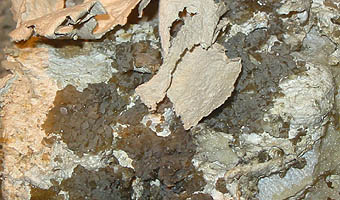
A sample of palygorskite |

Bentonite (volcanic ash) from Wyoming |
Bentonite ()[1] is
an absorbent aluminium phyllosilicate clay consisting mostly of montmorillonite. One of the first occurrences of
bentonite was found in the Cretaceous Benton Shale near Rock River, Wyoming. The Fort Benton Group,
along with others in stratigraphic succession, was named after Fort Benton, Montana in the mid-19th
century by Fielding Bradford Meek and F. V. Hayden of the U.S. Geological Survey.[2].
Bentonite has been prescribed as a bulk laxative, and it
is also used as a base for many dermatologic formulas.[11] Granular
bentonite is being studied for use in battlefield wound dressings.[12] Bentonite is
also sold online and in retail outlets for a variety of indications.[13]
Bentoquatam is a bentonate-based topical medication
intended to act as a shield against exposure to urushiol, the oil found in plants such as poison ivy or poison oak.[14]
Bentonite can also be used as a desiccant due to its adsorption properties.
Bentonite desiccants have been successfully used to protect pharmaceutical,
nutraceutical, and diagnostic products from moisture degradation and extend
shelf life. In fact, in the most common package environments, bentonite
desiccants offer a higher adsorption capacity than silica gel desiccants. Bentonite complies with the
FDA for contact with food and drugs.
|
Talc is
a clay mineral composed
of hydrated magnesium silicate with the chemical formula Mg3Si4O10(OH)2.
Talc in powdered form, often in combination with corn starch,
is widely used as baby powder. This mineral is used as a thickening agent and lubricant, is an
ingredient in ceramics, paint and roofing material, and is also one of the main
ingredients in many cosmetic products.[5] It
occurs as foliated to fibrous masses,
and in an exceptionally rare crystal form.
It has a perfect basal cleavage, uneven flat fracture
and it is foliated with a two dimensional platy form..
Talc is used in many industries, including paper making, plastic, paint
and coatings, rubber, food, electric cable, pharmaceuticals, cosmetics, and
ceramics. A coarse grayish-green high-talc rock is soapstone or steatite, used
for stoves, sinks, electrical switchboards, etc. It is often used for surfaces
of laboratory table tops and electrical switchboards because of its resistance
to heat, electricity and acids. In finely ground form, talc finds use as a cosmetic (talcum powder), as a lubricant, and
as a filler in paper manufacture. It is used to coat the insides of inner tubes and rubber gloves during manufacture to keep the
surfaces from sticking. Talcum powder, with heavy refinement, has been used in
baby powder, an astringent powder used to prevent diaper rash. |

The structure of talc is composed of Si2O5 sheets
with magnesium sandwiched between sheets in octahedral sites. |
Aluminium silicate (or aluminum
silicate)
is a name commonly applied to chemical compounds which are derived from aluminium oxide,
Al2O3 and silicon dioxide,
SiO2 which
may be anhydrous or
hydrated, naturally occurring as minerals or
synthetic. Their chemical formulae are often expressed as xAl2O3.ySiO2.zH2O.
It is known as E number E559.
Aluminium silicate is a type of fibrous material made of aluminium oxide and
silicon dioxide, (such materials are also called aluminosilicate fibres). These
are glassy solid solutions rather than chemical compounds. The compositions are
often described in terms of % weight of alumina,
Al2O3 and silica,
SiO2.
Temperature resistance increases as the % alumina increases. These fibrous
materials can be encountered as loose wool, blanket, felt, paper or boards.[4] |

Phase diagram of Al2SiO5
(nesosilicates).[1]
|
Drinking water,
also known as potable
water,
is water that
is safe to drink or
to use for food preparation.
The amount of drinking water required to maintain good health varies, and
depends on physical activity level, age, health-related issues, and
environmental conditions.[1] Americans,
on average, drink one litre of water per day and 95% drink less than three
litres per day.[2] For
those who work in a hot climate, up to 16 litres a day may be required.[1].
Sixty million people are estimated to have been poisoned
by well water contaminated by excessive fluoride, which dissolved from granite rocks. The
effects are particularly evident in the bone deformations of children. Similar
or larger problems are anticipated in other countries including China,
Uzbekistan, and Ethiopia. Although helpful for dental health in low dosage,
fluoride in large amounts interferes with bone formation.[47]
Half of Bangladesh's 12 million tube wells contain unacceptable levels of arsenic due to the wells not dug deep
enough (past 100 metres). The Bangladeshi government had spent less than US$7
million of the 34 million allocated for solving the problem by the World Bank in 1998.[47][48] Natural arsenic poisoning is a global threat
with 140 million people affected in 70 countries globally.[49] These examples
illustrate the need to examine each location on a case by case basis and not
assume what works in one area will work in another.
In 2008, the Swiss Federal Institute of Aquatic Science
and Technology, Eawag, developed a method by which hazard maps could be produced
for geogenic toxic substances in groundwater.[50][51][52][53] This provides
an efficient way of determining which wells should be tested.
|

Tap water is
drinking water supplied through indoor plumbing for
home use |
Leading with Quality, Performance and Cost
 Our partners, the
Aeon Procare, with a unique knowledge of mineral technology, combined
with application expertise select the most suitable minerals to improve the
formulation of our customers products. AEON is continuing to develop and
customise grades for the pharmaceutical and personal industry and has a vision
to add new speciality mineral products as per the customer requirements and
market demand. AEON team has got wide experience and expertise in this sector to
provide you with the best service. Ensuring quality at every stage is our key
USP, We harness the power of knowledge to deliver superior solutions to our
customers. Our multi-faceted team has developed products specially keeping your
complex business specifications in mind. Our technical wing encourages customer
requirements.
Our partners, the
Aeon Procare, with a unique knowledge of mineral technology, combined
with application expertise select the most suitable minerals to improve the
formulation of our customers products. AEON is continuing to develop and
customise grades for the pharmaceutical and personal industry and has a vision
to add new speciality mineral products as per the customer requirements and
market demand. AEON team has got wide experience and expertise in this sector to
provide you with the best service. Ensuring quality at every stage is our key
USP, We harness the power of knowledge to deliver superior solutions to our
customers. Our multi-faceted team has developed products specially keeping your
complex business specifications in mind. Our technical wing encourages customer
requirements.
- GMP certified facility
-
Maintain ISO 9001:2015 standards
- Well-equipped facilities that meet
global standards for production
- Latest equipments & technology
- Highly qualified & experienced QC, QA
team
- Products compliant to British and US
pharmacopeia
- Ensure customized products for
customers
PHARMACEUTICAL &
COSMETICS


|
ATTAPULGITE
Attapulgite is a puried native hydrated magnesium aluminium silicate consisting
of the clay mineral Palygorskite. It is used widely in oral medications
especially antidiarrheal medications as it absorbs the bacteria or germ causing
diarrhoea. Attapulgite acts as abrasive, absorbent, anticaking agent, binder,
bulking agent and viscosity increasing agent which helps in making high quality
cosmetics products.
Pharmaceutical Applications
•
Anti-Diarrhoea tablets
•
Anti-Diarrhoea suspension
•
Mycotoxin & Aatoxin Binders
GRADES:
•
PRIME – A ( Activated )
•
PRIME – C ( Colloidal )
•
PRIME – TOX ( Animal Nutrition )
Cosmetics Applications
•
Lotion and creams
•
Liquid soaps
•
High quality cosmetics
•
Bulking and viscosity agent
GRADES:
•
PRIME– CARE
|
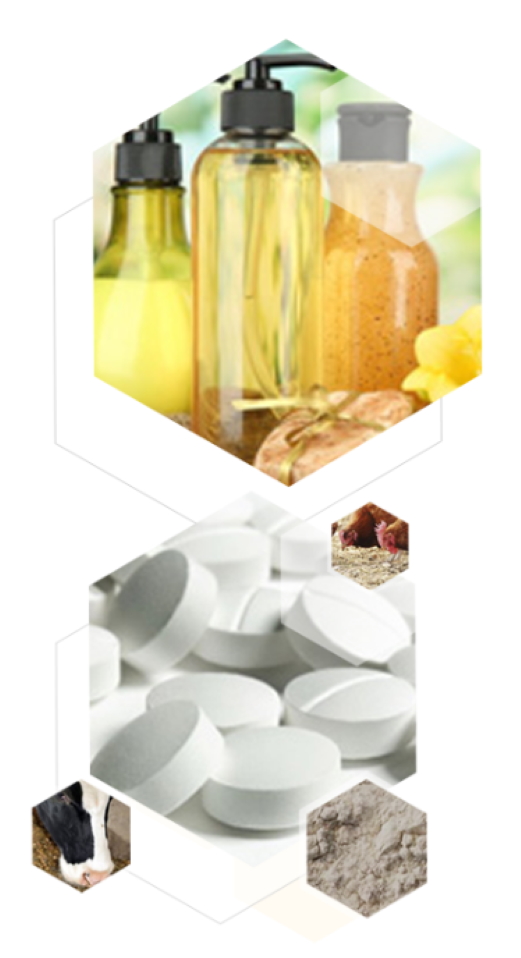
|
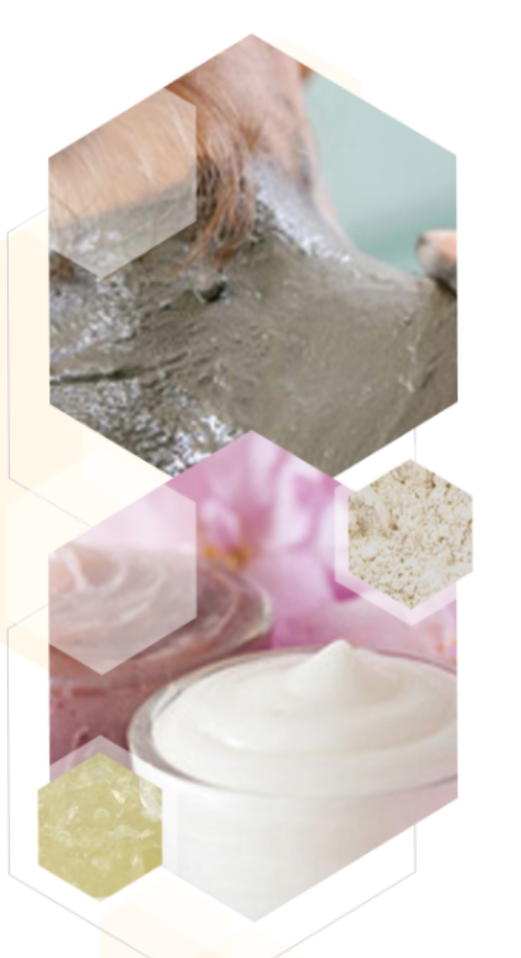
|
BENTONITE
Bentonite is native colloidal hydrated aluminium silicate consisting mainly of
montmorillonite. Bentonite is typically included in formulas because of its
absorbency. The clay consists of very tiny akes with small amounts of space in
between. These small spaces readily accept uids. Once the clay has pulled these
liquids into the spaces, it retains them. This property makes it very useful for
absorbing oil from the complexion.
Pharmaceutical Applications
•
Topical & oral preparations
•
Formulation of suspensions and gels
•
Aqueous preparation
•
Cream bases
•
Antidote in heavy metal poisoning
GRADES :
•
BENTAPRO – C
Cosmetic Applications
•
Mud packs
•
Calamine lotions
•
Baby powders & Face cream
•
Skin Care & Hair Care
•
Fragrance
•
Protective creams
•
Wet compresses
•
Anti-irritants for eczema
GRADES :
•
BENTA CARE –S
•
BENTA CARE – C
|
|
TALC
Talc is a puried hydrated magnesium silicate widely used as a dissolution
retardant in the development
of controlled release products. Talc is also used as a lubricant in tablet
formulations in a novel
powder coating for extended-release pellets and as an adsorbent. Talc is
additionally used to clarify
liquids and is also used in cosmetics and food products mainly for its lubricant
properties.
Pharmaceutical Applications
•
Dusting Powder
•
Excipient & Filler for pills, tablets|
•
Anticaking & Lubricant
•
Dusting tablet moulds
GRADES:
•
PRO TALC – 96
•
PRO TALC – 88
•
PRO TALC – C ( Custom )
Cosmetic Applications
•
Blushers, Eye shadows & compact powders
•
Talcum Powder
•
Fragrance
GRADES:
•
TALCARE – 96
•
TALCARE – 88
•
TALCARE – C ( Custom )
|
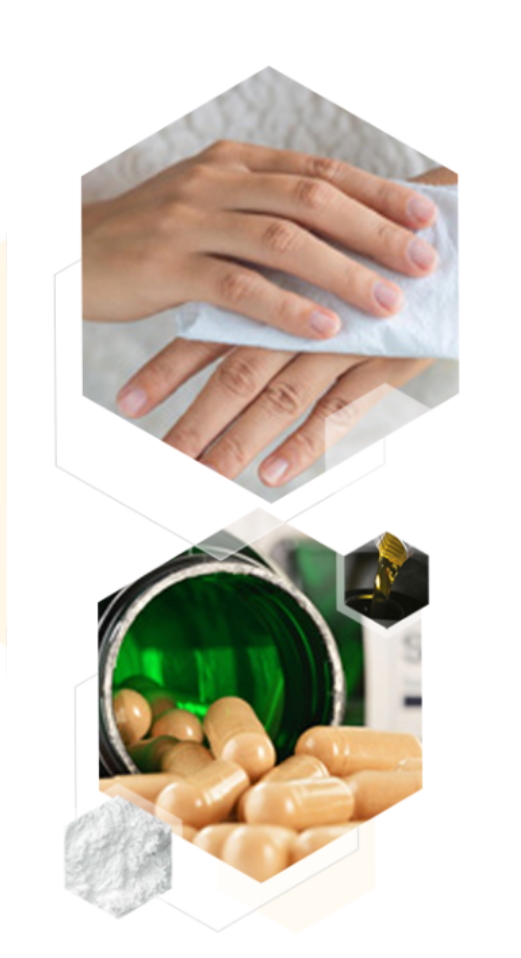
|
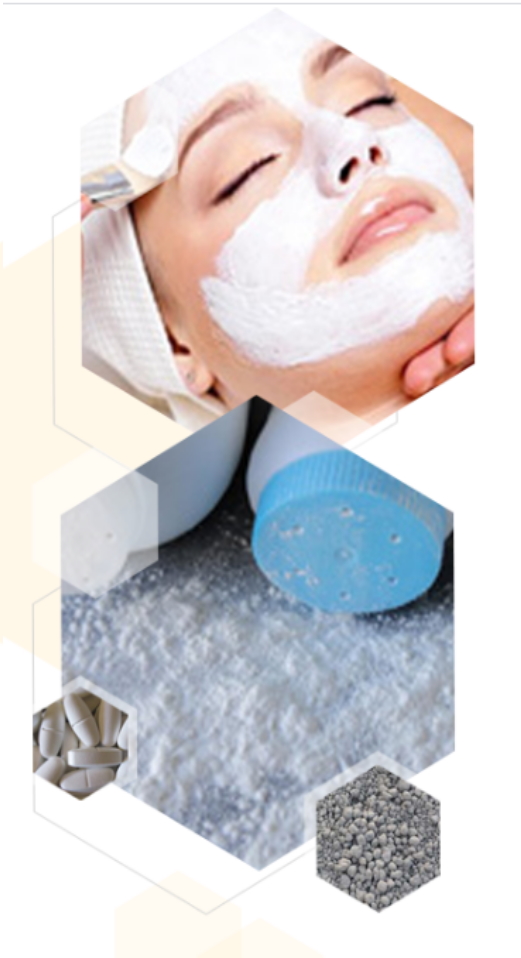
|
CALCIUM CARBONATE
Calcium carbonate
used as a calcium supplement or as
an antacid in Pharmaceuticalapplications.
It is a natural ingredient bringing multiple benets to
color cosmetics and skincare products. They are produced under clean and
controlled manufacturing conditions compliant with international regulatory
standards.
Pharmaceutical Applications
• Base for
medicated dental preparations
• Bffering
agent
• Antacid
• Calcium
Supplement
• Dissolution
aid in tablets
• Dry binder
• Excipient as
diluent
GRADES :
• Pro CAL – L
( Light )
• Pro CAL – H
( Heavy )
• Pro CAL – C
( Custom )
Cosmetic Applications
• Oral care
• Skin care
and hair care applications
• Toothpaste
• Colour
cosmetics
GRADES :
• CALCARE – R
( Regular )
• CALCARE – T
( Toothpaste )
• CALCARE – C
( Custom )
|
|
MAGNESIUM ALUMINUM SILICATE
Magnesium aluminium silicate is an off-white powder used in the pharmaceutical manufacturing process as
an absorbent and anticaking agent.
It is a naturally occurring mineral derived from rened and puried clay that is used primarily as a thickener in
cosmetics and beauty products.
The viscosity of aqueous dispersions may be greatly increased by combination with other suspending agents.
Pharmaceutical Applications
• Opacifying agent
• Anticaking agent
• Slip modier
• Viscosity agent.
• Tablet making
• Suspensions
GRADES:
• MAS PRO
Cosmetic Applications
• Pressed eye shadows
• Hair conditioners
• Filler in deodorants
• Shaving creams
• Thick lotions
GRADES:
• C – MAS
|
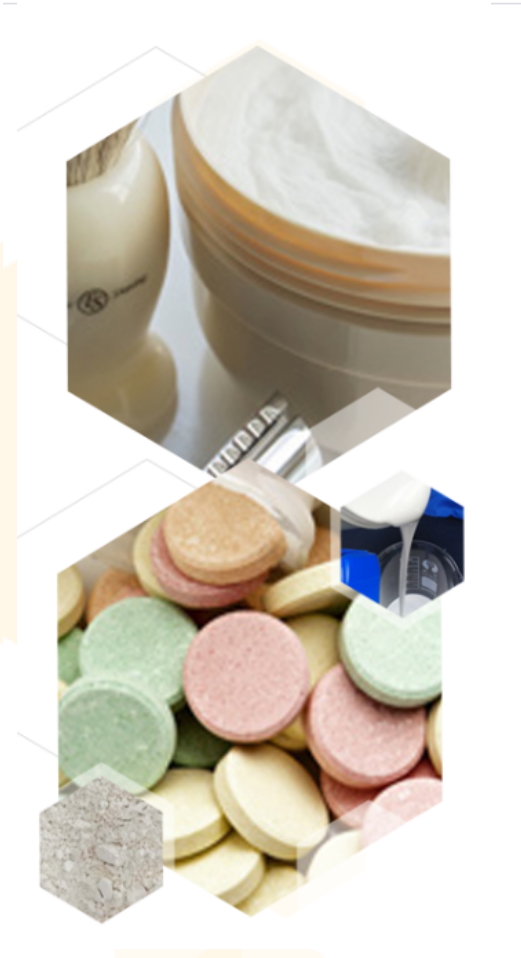
|

|
KAOLIN
Kaolin is a naturally occurring mineral used in oral and topical pharmaceutical formulations and is generally
regarded as an essentially non-toxic and non-irritant material. Due to its
origins in Chinese clay mixtures, it is sometimes referred to as China clay.
It is used in various facial products and treatments. It has been specially designed for formulations where
bacteria control, purity and high whiteness are required.
Pharmaceutical Applications
•
Anti-Diarrhoea tablets
•
Anti-Diarrhoea suspension
• Emollient and
drying agent
GRADES :
• KALPRO – L (
Light )
• KALPRO – H (
Heavy )
Cosmetic
Applications
• Texturizing &
mattifying agent
• Face creams
• Hair care
products
• Pressed
powders
• Liquid
foundations
GRADES :
• KAYCARE – L (
Light )
• KAYCARE – H (
Heavy )
|
WATER

METACIL - AS
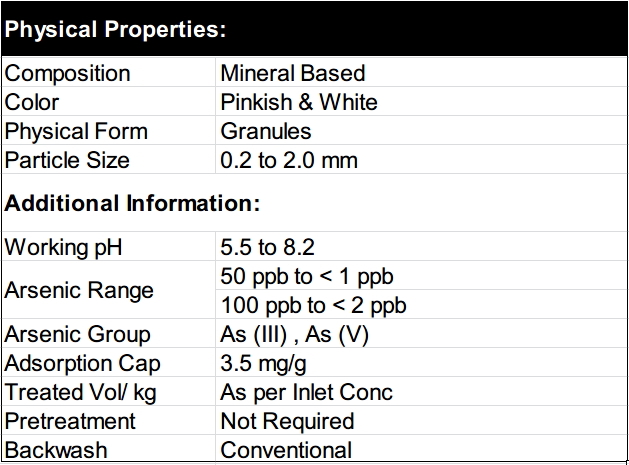
|
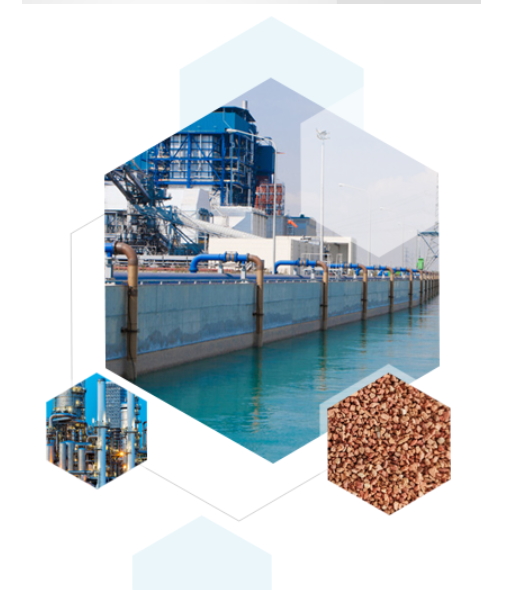
This is a revolutionary mineral based media for removal of Arsenic from drinking
water. This media is robust and can deal with high level of Arsenic with
variable feed characteristics. It is easy to operate and can be used in POU &
POE systems.
|
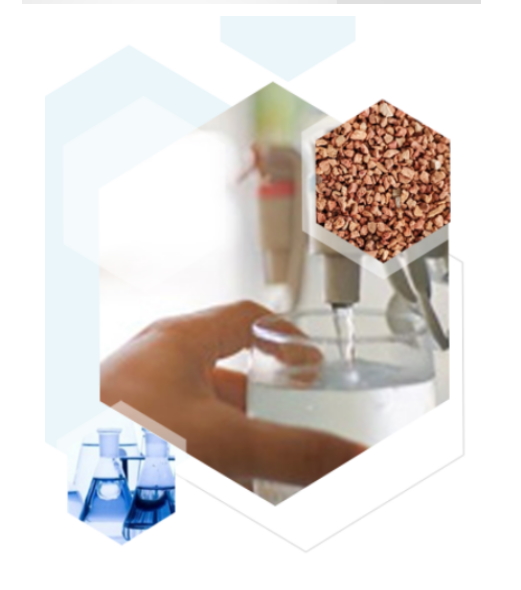
This media is based on Mineral Modification Technology. It is formulated to
adsorb high level of Fluoride from ground & surface water. It can also be used
in conjuncture for pre existing filters. This robust media gives 99% efficiency
in removal and gives high treatable volume compared to other chemically induced
technologies. |
METACIL - F
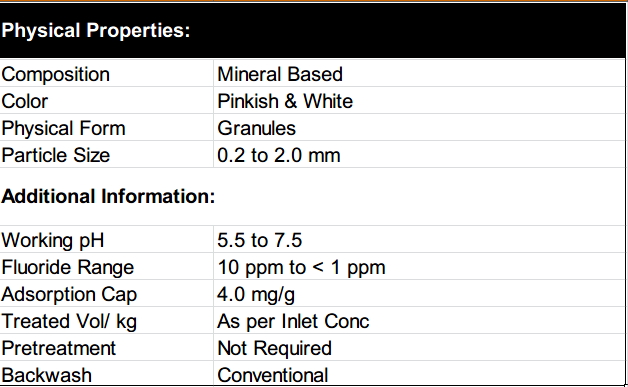
|
|
METACIL
- FE

|

This
media is a revolutionary mineral based media for removal of Iron from drinking
water. This media works on precipitation and can remove iron from ground water
without additional set up. It can be used in conjuncture with preexisting
filters. It contains no chemical additives and can work efficiently with
inconsistent feed characteristics. It can be used for POE & POU systems in
column application. |
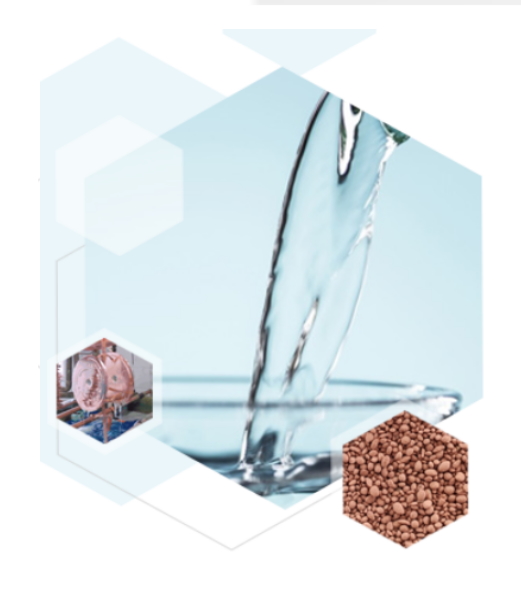
This media is a new variant of MetaCIL for removal of Lead from drinking water. This media caters to lead
in Ground & surface water, and can bring it down to permissible limits by simple
column adsorption technique. This mineral is formulated to give maximum
adsorption efficiency & high treatable volume. It is a simple column based
application which is cost efficient & easy to operate. Can be used in
conjuncture with pre existing set ups for Households and community. |
METACIL
- PB

|
|
|